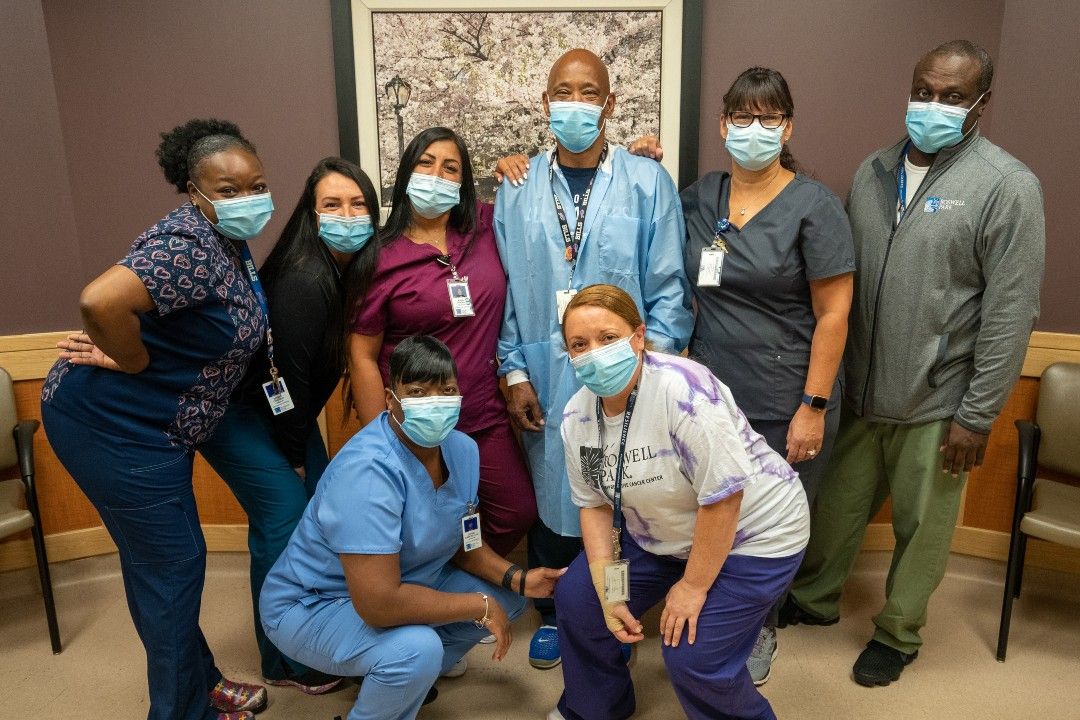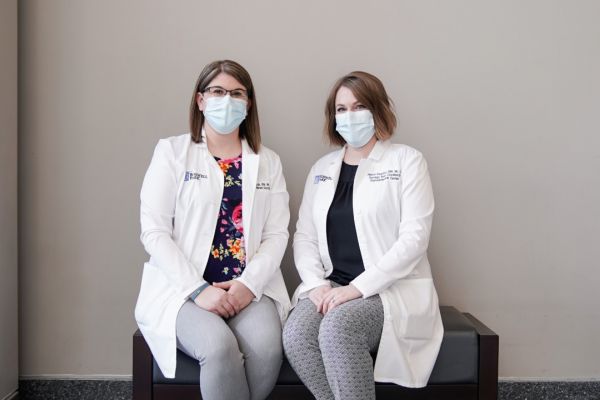For most patients coming into Roswell Park Comprehensive Cancer Center for treatment, the first stop of the day is to the Phlebotomy Department.
Located on the ground floor of the main hospital, just to the right of the lobby, the Phlebotomy Department includes 15 technicians who work quickly to draw blood for important laboratory tests necessary for patients to get the care they need, with results processed in a matter of hours.
“We verify their name and birthday and bring up their orders,” says Linda Warren, the supervising phlebotomist in Roswell Park’s lab. “We draw any orders their doctor has for them, whether it’s for day-of-treatment, for treatment scheduled to take place in the near future, or for surgeries. A patient is in our chair for no longer than about 10 minutes.”
Each vial is labeled with the patient’s information while the person is still sitting in the chair, adds Christopher Stone, Administrator in the Department of Laboratory Medicine. "We have a tight deadline looming overhead," Stone says. “We handle both appointments and walk-ins, and we’re processing things in real time.”
“Patients who are receiving chemotherapy might be in our chairs one to four times per week,” Warren says. “We have to work quickly because some of our patients come in and need treatment the same day, but that can’t happen until their results are received.”
Special care for special patients
Phlebotomists are trained to perform their delicate work over the course of a few months but become very skilled as they work with cancer patients. The phlebotomists who work at Roswell Park learn different skills and must consider their patients’ important medical needs and challenges as well.
Some patients might have veins that have collapsed or are difficult to find in one arm compared to the other. Some will need to have blood drawn from their hand or will have specific needle placement considerations to assess due to surgery or presence of a port.
Warren says it’s helpful for her and her team to know if someone has fainted during a blood draw previously. There’s special seating available for those people who need it, a larger chair that reclines almost all the way back to help reduce the risk of falling over during a draw. Being well-hydrated can make the process easier, but not all patients can eat or drink before coming in for bloodwork.
Making a routine draw as pain-free as possible
If you’ve had blood drawn elsewhere, you probably remember the unpleasant and sometimes painful jostling that occurs as vials are filled and replaced. That typically happens with blood draws that use straight needles attached directly to tubes.
To make it easier on patients, Roswell Park uses only butterfly needles, which are smaller gauge and connect to the vials via flexible rubber tubes. This way, when one vial is swapped out for a new one, the patient doesn’t feel the transition as much, if at all, Stone says.
The other big difference is that phlebotomists at Roswell Park develop relationships with their patients, especially those who come in on a frequent basis.
“I know Linda and her team see the same people all the time,” Stone says. “Some patients have a preference for who draws for them. Some patients have developed such a relationship and appreciation for the staff in phlebotomy that have even been known to bring in treats for them as a 'Thank you' for the caring service they receive."
The Phlebotomy Department at Roswell Park is located on the first floor of the main hospital and is open 6 a.m. – 5:30 p.m. Monday through Friday.
Never miss another Cancer Talk blog!
Sign up to receive our monthly Cancer Talk e-newsletter.
Sign up!
